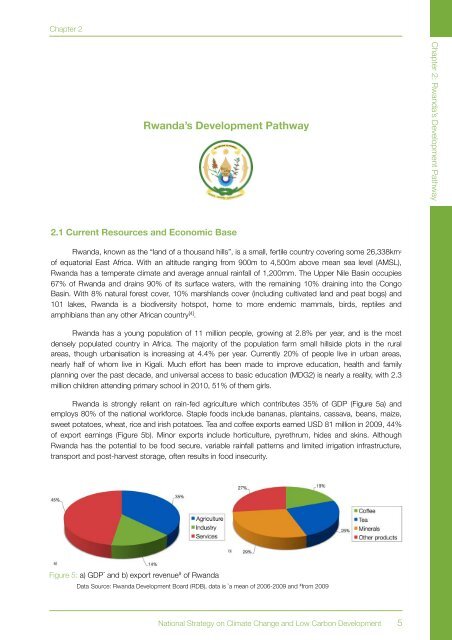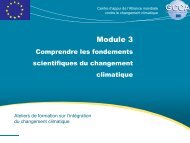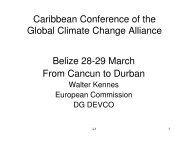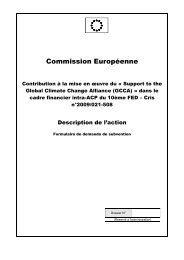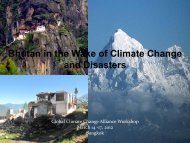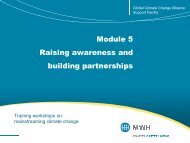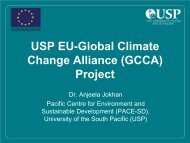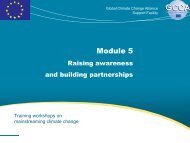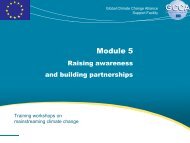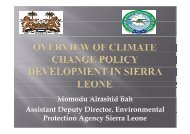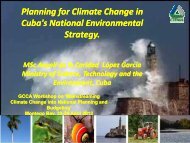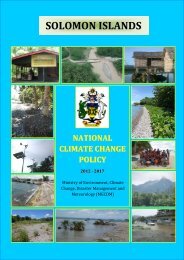Rwanda Green Growth Strategy 18nov11 - Global Climate Change ...
Rwanda Green Growth Strategy 18nov11 - Global Climate Change ...
Rwanda Green Growth Strategy 18nov11 - Global Climate Change ...
You also want an ePaper? Increase the reach of your titles
YUMPU automatically turns print PDFs into web optimized ePapers that Google loves.
Chapter 2<strong>Rwanda</strong>’s Development PathwayChapter 2: <strong>Rwanda</strong>’s Development Pathway2.1 Current Resources and Economic Base<strong>Rwanda</strong>, known as the “land of a thousand hills”, is a small, fertile country covering some 26,338km 2of equatorial East Africa. With an altitude ranging from 900m to 4,500m above mean sea level (AMSL),<strong>Rwanda</strong> has a temperate climate and average annual rainfall of 1,200mm. The Upper Nile Basin occupies67% of <strong>Rwanda</strong> and drains 90% of its surface waters, with the remaining 10% draining into the CongoBasin. With 8% natural forest cover, 10% marshlands cover (including cultivated land and peat bogs) and101 lakes, <strong>Rwanda</strong> is a biodiversity hotspot, home to more endemic mammals, birds, reptiles andamphibians than any other African country [4] .<strong>Rwanda</strong> has a young population of 11 million people, growing at 2.8% per year, and is the mostdensely populated country in Africa. The majority of the population farm small hillside plots in the ruralareas, though urbanisation is increasing at 4.4% per year. Currently 20% of people live in urban areas,nearly half of whom live in Kigali. Much effort has been made to improve education, health and familyplanning over the past decade, and universal access to basic education (MDG2) is nearly a reality, with 2.3million children attending primary school in 2010, 51% of them girls.<strong>Rwanda</strong> is strongly reliant on rain-fed agriculture which contributes 35% of GDP (Figure 5a) andemploys 80% of the national workforce. Staple foods include bananas, plantains, cassava, beans, maize,sweet potatoes, wheat, rice and irish potatoes. Tea and coffee exports earned USD 81 million in 2009, 44%of export earnings (Figure 5b). Minor exports include horticulture, pyrethrum, hides and skins. Although<strong>Rwanda</strong> has the potential to be food secure, variable rainfall patterns and limited irrigation infrastructure,transport and post-harvest storage, often results in food insecurity.Figure 5: a) GDP * and b) export revenue # of <strong>Rwanda</strong> Data Source: <strong>Rwanda</strong> Development Board (RDB), data is * a mean of 2006-2009 and # from 2009National <strong>Strategy</strong> on <strong>Climate</strong> <strong>Change</strong> and Low Carbon Development 5


